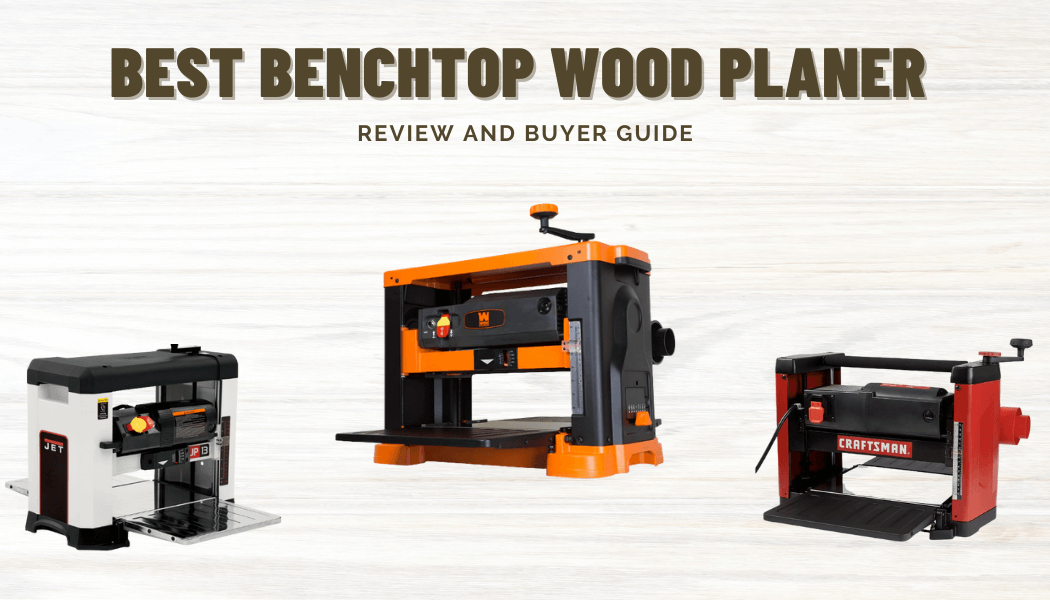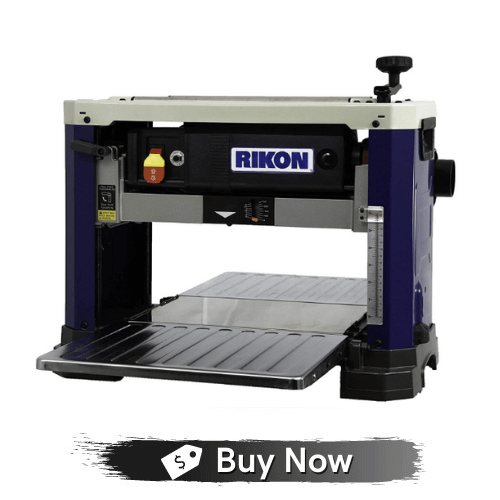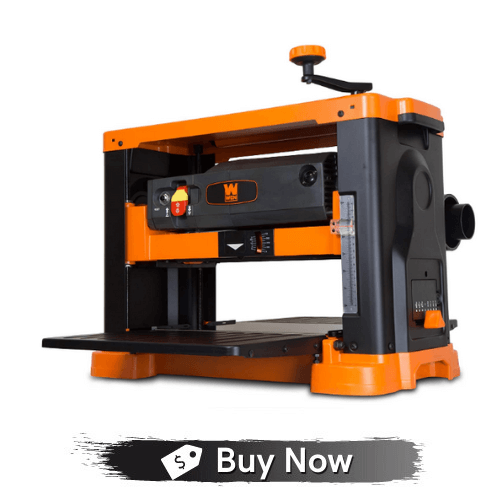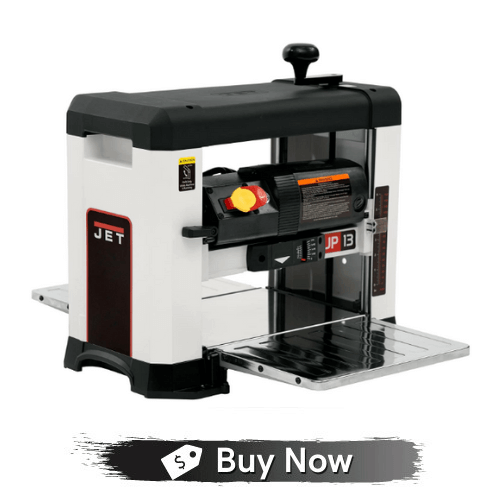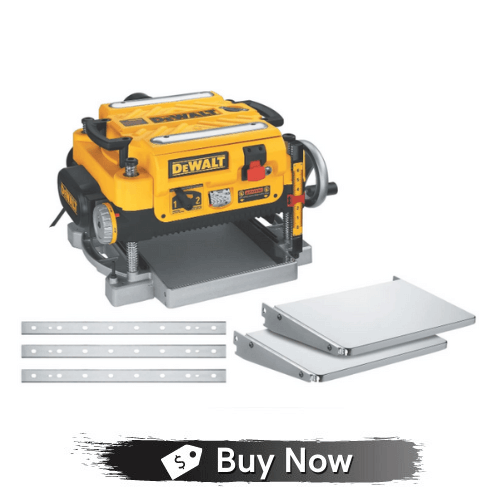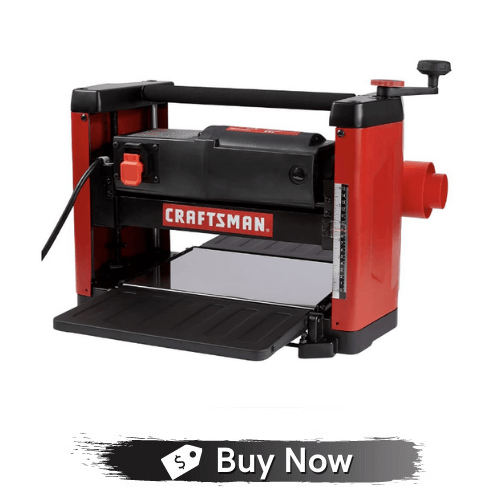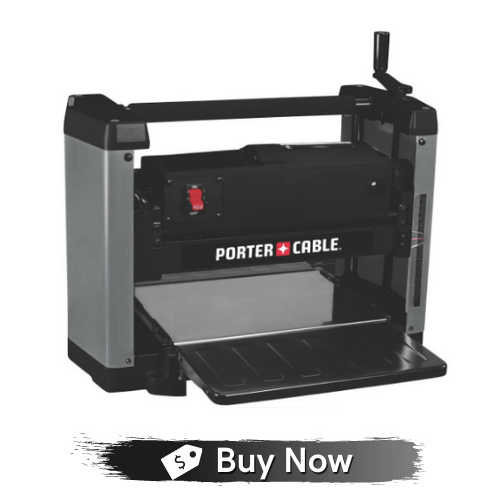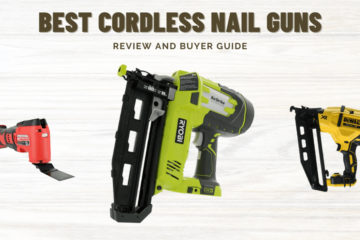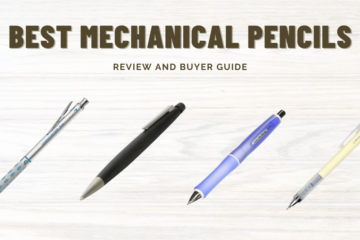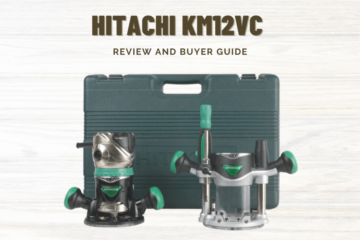Dimensioning and planning raw lumber might be difficult, but if you have decent portable thickness planer equipment on hand, it can make all the difference.
You can use it to smooth out old, worn-out, rough wood so that it is ready for your tasks. It is therefore without a doubt among the most crucial woodworking machine tools you require in your workshop.
As you can use it to remove the rough or outdated surface of the wood to reveal a smooth and new surface ideal for fine woodworking projects, it is also known as a surface planer.
A thickness planer is a need for your workshop if you intend to work with rough-sawn lumber and turn it into a spectacular item with smooth sides and uniform thickness.
Many people have started investing their time and money in woodworking as a result of the pandemic in an effort to pass the time while under lockdown productively.
The time and cost associated with dimensioning lumber can be decreased with thickness planers. These planers, as opposed to hand planes, provide a uniform thickness that enables you to make level tabletops, joinery, and generally better projects.
There are numerous features of the tool to take into account, and since most of them share the same appearance, it might be challenging to tell a decent machine from a device you wouldn’t want in your workshop.
We’ve researched some of the top benchtop thickness planers available for purchase online to help you with your search. You can also read our article below on some of the things to think about when purchasing a wood planer.
Things to Know Before Buying the best Benchtop Wood Planers:
If you’ve never used one, selecting a portable benchtop thickness planer for a project can be a reasonably tough job. However, with the following advice, you’ll be able to distinguish between what’s crucial and what isn’t.
Most benchtop planers can typically cut up to 1/8″ at a time; some can even cut twice as deep. This indicates that you can obtain the same thickness capabilities as a substantial industrial machine; it will only take a few trips through the machine.
The benchtop planer’s price often corresponds to the amount of surface it can precisely remove in one pass.
WIDTH
The largest size of boards that a thickness planer can accommodate is specified by its width capacity. One with a 13-inch width capacity can plane boards no wider than 13 inches, and one with a 12-1/2-inch width capacity may plane boards no wider than 12 inches.
The bigger the width capacity, the better it is for you since you can plane broader boards with it without needing to reduce the boards, so keep that in mind while making your decision.
MOTOR
The motor powering the cutter head and the infield and outfield rollers on the benchtop thickness planer you select should be of high caliber. You may plane any kind of wood with it if it has a high-quality and powerful motor, whether it’s hardwood like oak or softwood like pine.
The cutter head of most benchtop planers is rotated at rates between 8000 and 10000 rpm by 15 amp motors.
The surface of the wood will be smoother the higher the RPM. This is because faster cutter heads allow for more cuts per inch of wood put through the machine. Due to slower feed rates, feeding your wood stock into a planer with less power also takes longer.
PART REPLACEMENT
A benchtop planer is a machine just like any other. It won’t continue to be the same forever. After some time, some parts will require replacement. Therefore, you must ensure that the one you select has parts that can be easily obtained in the shop of your local dealer or ordered online.
When replacing a part, it’s a good idea to review the warranty. Make sure you have a way to return it if it breaks too quickly.
DUST COLLECTION
A planer produces a lot of chips, which might create a mess if a dust collection or vacuum isn’t connected. Some have built-in fans that, for the best dust collection, draw chips away from the cutter head and blow them out of the dust port.
If your planer is distant from your dust collection and requires a boost, this is helpful. The majority have dust hoods that attach to a 4″ hose, a 2-12 ” hose, or both, however a few only offer hoods as extras.
SELF-INDEXING KNIVES
Self-indexing, double-edged knives are present in almost all straight-knife cutter head variants. Setting knives that don’t self-index is difficult and time-consuming. Additionally, an automated cutter head lock is beneficial since it stops the head from rotating as you take out the bolts and knives.
Some portable planers are now available with (or as an option) segmented cutter heads, which are made up of 12-inch-thick segments that are each equipped with a high-speed steel insert cutter and have four cutting edges apiece.
The main benefit of this head is that if one or more cutters are damaged, you can easily replace them by rotating the afflicted inserts by a quarter-turn.
GUAGE
A gauge that shows how much wood will be removed with each pass is found on many planers. These gauges aid in preventing overeating, which could lead to tear-out or deeper puncture.
We particularly appreciate the adjustable preset depth stops, which come in handy when planning various project sections to the same thickness and prohibit planning a board any thinner than the desired thickness.
SNIPE AND SCALLOP
Snipe is a deeper incision on the ends of the wood caused by the wood shifting up or down while being fed through the planer. The size and adjustability of the infeed and outfeed tables have an impact on this; most planers provide extra infeed and outfeed tables as an extra. A planer with an automated cutter head lock will be very beneficial in preventing snipes.
Unless you’re skilled at feeding the wood into the machine, a tiny amount of snipe is unavoidable when using a machine that does automatically lock. However, this can typically be eliminated with some moderate sanding. Sometimes it might be so nasty that the piece’s ends must be severed and discarded.
The ripple-like impression you see when the wood passes the cutters is called a scallop. The number of rollers feeds speed, and better knife speed that has more cuts per inch, all work together to lessen the scallop effect. By employing numerous rollers, a proficient planer can feed wood through without producing any discernible scallop.
POWER
Power is crucial because it affects both the thickness of the wood being cut and the degree to which a machine can cut. You can work more quickly if your machine is more powerful. Because all of them use 15A (1800W) motors and hence offer nearly the same cutting capacity, we won’t focus too much on power for the sake of this evaluation.
PRICE
When purchasing a planer (or any tool, for that matter), the general guideline is that the more well-known the brand, the more expensive it is. However, not everyone can afford a pricey planer, and getting the most costly model makes no sense if you’re only going to use it occasionally.
However, buying the cheapest planer you can find can also end up being a bad decision in the long term. You might adore it because you made significant financial savings, or you might detest it because it leaves significant snipes or slows down many weeks after you purchase it.
BLADES
Knives commonly referred to as thickness planer blades, come in two designs: straight and spiral. Each has advantages and disadvantages. Straight knives resemble long safety razors in appearance. To quickly remove layers of material, they fasten onto the cutter head (the rotating barrel inside a planer). The output from a straight knife planer can be a little sloppy and unpredictable.
As a result of the friction caused by the enormous surface area making simultaneous contact with the wood, the motor may get slower with each swipe, leading to choppiness and ripples that must be afterward removed by sanding. The majority of planers with straight knives cost less than the ones with spiral blades.
Knives that spiral or helical operate extremely differently. Spiral cutterheads have numerous tiny blades offset from one another in a spiral around the cutter head rather than a single long straight blade. Results from spiral knife planers are more reliable than those from straight knife planers.
Additionally, the blades are reversible when they become dull, and if you accidentally run your planer into a nail or screw, only one blade will be harmed rather than the entire knife. Spiral knife planers are frequently considerably more expensive than plain knife cutter devices, which is not surprising.
6 BEST BENCHTOP WOOD PLANER REVIEWS
| Image | Product | Features | Price |
Our Pick1 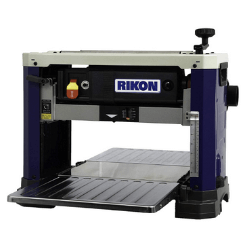 | RIKON 25-135H, 13 Portable Planer | All steel construction | |
2 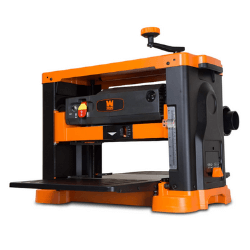 | WEN Spiral Thickness Planer | 26 HSS staggered blades | |
3 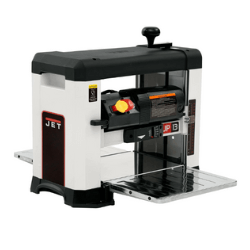 | JET Helical Benchtop Planer | 2-HP 5amp powerful motors | |
4 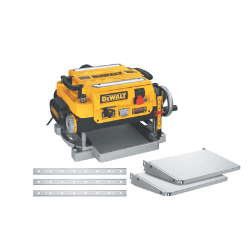 | DEWALT Thickness Planer | Automatic carriage lock | |
5 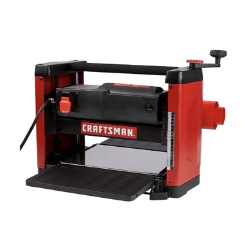 | CRAFTSMAN Benchtop Planer | Vacuum port for dust collection | |
6 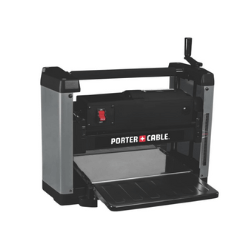 | Porter-Cable 15 Amps Benchtop Planer | Double-edged high carbon steel |
RIKON 25-135H, 13 Portable Planer
The Rikon 25-135H portable thickness planer is more expensive than some of the other items on this list, but it also has premium features that some of the others don’t have.
The cutter head it comes with, which has a helical design, is one of its standout characteristics. It has 26 high-speed steel (HSS) inserts that have been precisely honed in a 6-row helical-style cutter head.
Each insert has two edges that are sharpened, allowing you to rotate them if one becomes blunt. Simply release the screw holding the knife, turn it to the new edge, and then retighten it to give yourself a fresh edge to work with.
The helical-style cutter head of this Rikon 25-135H has the benefit of shearing through the wood at an angle, resulting in incredibly clean and smooth cuts. It needs very little sanding because it is so smooth.
It is less disruptive than thickness planers that use a straight knife cutter because of the shearing motion. A 15 amp, 115 volt motor with a no-load speed of 22000 RPM is included with the 25-135H. The cutter head spins at 10,000 RPM as a result of this.
When contrasted to other transportable planers with 12-inch or 12.5-inch width, this machine can actually plane wider boards thanks to its 6-inch depth capacity and 13-inch width capacity.
| Product Specifications | |
|---|---|
| Brand | Rixon Power tools |
| Model | 25-135H |
| Item Weight | 67.9 Pounds |
| Dimension | 25 x 20 x 16 inches |
- Two-speed race
- Portable
- Alternate cutting patterns
- 26 HS insert cutters
- All steel construction
Why We Choose This product:
- The turret depth allows the use of lesser materials from the stock.
- The stability and durability of the machine are improved by the 4-post threaded support for the cutter-head.
- The height adjustment crank easily sets the depth of the cut.
- All steel body makes them durable and avoids wobbly structure that ensures stability.
WEN Spiral Thickness Planer
The WEN benchtop thickness planer comes in a number of versions, including the 6550, 6552, 6552T, and others. The WEN PL1326 is the most recent of them. A spiral cutter head has been added to the WEN PL1326 portable benchtop thickness planer, which is an improvement over the WEN 6552T. The older model had a cutter head with three straight blades.
With this brand-new spiral cutter head, which has 26 staggered and rotatable high-speed steel (HSS) blades, you have a tool that can give your rough timber pieces the cleanest, smoothest finish possible. The WEN PL1326 can plane the widest boards on a portable machine like this because of its 13-inch width capability and 6-inch depth capacity.
A 15 amp motor turning at 10,000 RPM at a feed rate of 26 feet per minute spins the spiral cutter head. Keeping a clean working space is simple thanks to the adjustable dust port at the back, to which you can hook your dust collector or shop vac. The amount of stuff that will be removed per inch passed through the machine is also shown by a new and enhanced onboard thickness gauge.
| Product Specifications | |
|---|---|
| Manufacturer | WEN |
| Batteries Required | No |
| Pattern | 3-Inch Spiral Blade Planer |
| Item Weight | 80.8 pounds |
| Dimension | 26 x 21.5 x 16 inches |
| Item Model Number | PL1326 |
| Style | Spiral Cutterhead |
| Base Material | Cast Iron |
- 26 HSS staggered blades
- 0 to ⅛ of an inch per pass cut
- 15A motor generates 10,000 RPM
- Plane boards up to 6 inches thick and 13 inches wide
Why We Choose This product:
- The users are informed about the cutting depth of each pass by an onboard material removal gauge.
- The workpiece’s chips and sawdust are removed and blasted out of the way via the adjustable dust port.
- You can achieve an exact workpiece thickness with the highest degree of precision thanks to the onboard depth stop.
- Additionally included in this set are height-adjustable infeed and outfeed tables, which help to prevent snipes while additionally supporting your workpiece while planning.
JET Helical Benchtop Planer
The Jet JWP-13BT is the only tabletop thickness planer on this list that is pre-equipped with a helical cutter head. It has a 15 amp, 2 horsepower motor that spins the helical cutter head at 10,000 revolutions per minute.
The Jet JwP-13BT has an adjustable in-feed and out-feed table for workpiece support and snipe prevention, as well as a precision, machined cast iron bed.
In contrast to the knives of a straight knife cutter head, the helical cutter head is made up of 6 rows of 24 quick-change carbide inserts. It can accommodate 13 inches of width, 6 inches of depth, and a maximum cut depth of 1/8 inches.
Additionally, it has adjustable foldable infeed and outfeed tables and a dust collection port for precise results. It can accommodate boards up to 6 inches thick and has a 13-inch width capacity.
Moreover, the Jwp-13Bt lets you change the feed speed from 18 to 26 feet per minute, thus changing the cuts per inch.
| Product Specifications | |
|---|---|
| Brand | JET |
| Model | 180410 |
| Item Weight | 75 pounds |
| Dimension | 26 x 17 x 21 inches |
| Item Model Number | 722130 |
| Manufacturer Part Number | 180410 |
| Material | Alloy Steel, Cast Iron |
| Style | Benchtop planer |
| Power Source | AC |
| Voltage | 120 |
| Usage | Inside: Amateur |
| Sound Level | 97 db |
| Horsepower | 2 |
- Smooth cut
- Reduced spine
- 2-HP 5amp powerful motors
- Maximum efficiency
- Four post design
Why We Choose This product:
- The four-post design provides maximum cutter head support and control in relation to the workpiece and casting table.
- Boards are kept flat by a steel lid and a cast iron bed that has been precisely machined.
- It has the dual infeed speed control, for various types of wood material, which can be set to either 18 or 26 fpm, maximizing cut efficiency.
- A crisp cut is provided by a helical-style cutter head with easily interchangeable blades.
DEWALT Thickness Planer
The DW735X can accommodate surfaces up to 13 inches wide, making it the broadest portable planer available. The DW735X creates an extremely clean finish on the boards that pass through it thanks to its 3-knife cutter head.
One of the few portable thickness planers available with a gearbox with two speeds, allows the operator to adjust the feed speed from 96 to 179 cuts per inch.
By doing this, you may maximize the number of cuts per inch for both dimensioning and polishing the surface of the lumber. The automated carriage lock on the Dewalt DW735X tabletop thickness planer aids in locking the cutter head in place to stop snipping at the ends of the boards.
With a maximum depth capacity of 6 inches, it enables you to remove a significant amount of material from the wood you’re working on at once.
The infeed-outfeed tables are detachable and foldable, and the foundation is composed of solid cast aluminum. DeWalt equipped it with a spindle lock to reduce snipe and ensure an even, faultless finish. In addition, a fan-assisted chip ejection system keeps the dust exhaust outlet from getting clogged with sawdust.
While using this planer, keep a shop vac nearby because it can spray sawdust around.
| Product Specifications | |
|---|---|
| Brand | Dewalt |
| Model | DW735X |
| Item Weight | 101 pounds |
| Dimension | 24 x 22 x 18 inches |
| Material | Plastic |
| Style | 2-Speed 13″ w/Feed Tables & Extra Blades |
| Pattern | Planer |
| Voltage | 120 |
- Three knife cutter heads
- 19-3/4-inch cast aluminum base
- Automatic carriage lock
- Extra large thickness scale
- Fan-assisted chip ejection
Why We Choose This product:
- The extra-large thickness scale gives accurate cuts with every pass.
- The wood planer’s two-speed gearbox enables you to alter feed speed to optimize cuts per inch at 96 or 179 CPI.
- The thickness planer’s three-knife cutter head extends knife life by 30% and makes knife changes quicker and easier.
- The extra-large turret depth stop makes it simple for users to return to the thicknesses that they use the most frequently.
CRAFTSMAN Benchtop Planer
This thickness planer has a strong 15-amp motor that can produce up to 8000 RPM. It contains a steel cutter head with two knives that leaves a good, smooth finish. You simply need to adjust the machine to avoid any faults on your workpiece once the first few inches of the workpiece are left with a snipe. The depth of the cut varies beyond 8 inches.
After each pass, planers are infamous for creating a lot of sawdust. The good news is that Craftsman wood planers come with a dust chute that is simple to construct and has a vacuum attachment to keep your workspace tidy. You might find the CRAFTSMAN CMEW320 Benchtop Planer to be the ideal tool for you. The CME2W320 has a maximum cutting speed of up to 3/32 inches for boards up to 8 inches.
Materials up to 12 inches broad and 6 inches thick can be handled by the CMEW320. The CMEW320 is a wood planer that can manage boards up to 12 inches wide and is competitively priced. The cutter head spins at up to 8,000 RPMs thanks to a 15-amp motor. This planer offers 16,000 cuts per minute thanks to its two-blade, straight knife cutter layout, which is sufficient for the majority of light-duty hobby work.
| Product Specifications | |
|---|---|
| Brand | Craftsman |
| Model | CMEW320 |
| Item Weight | 61.2 pounds |
| Dimension | 23.5 x 17.5 x 15.4 inches |
| Item Model Number | CMEW320 |
| Style | Planer |
| Included Components | (1) CMEW320 Benchtop Planer |
- Vacuum port for dust collection
- Long cutting life
- Maximum stock removal
- Poly V cutter head
- Smooth operation
Why We Choose This product:
- Hard and soft wood material removal is powered by the woodworking planer’s 15 Amp motor.
- To remove the most stock, the thickness planer has a Poly-V Cutterhead drive.
- The strong steel cutter head placed on ball bearings in the two-knife wood planer ensures smooth operation and extended life.
- Ideal for planning glued-up materials as well as dimensioning lumber to the desired thickness.
Porter-Cable 15 Amps Benchtop Planer
This business is renowned for developing the technology used in band saws and portable belt sanders. Between the cutter head and table, boards up to six inches thick can be fed. Additionally, it can take boards up to 12.5 inches wide. The Makita 2012NB cannot handle something that wide.
Each pass has a maximum surface-cutting capacity of 1/8 inch. Under no load, the 15 amp electric motor has a maximum speed of 8,000 RPM. That moves more slowly than many of the models we have already examined. The two-knife cutting head and lower RPMs will create a surface that probably needs additional cleaning before a finish is applied. However, at these speeds, 16,000 cuts can be made every minute.
| Product Specifications | |
|---|---|
| Manufacturer | FloTool |
| Brand | Hopkins |
| Model | 42003MI |
| Item Weight | 2.61 pounds |
| Dimension | 17.25 x 20 x 6 inches |
- 15 amp motor
- Poly-V belt cutter head drive
- Patented cutter elevation
- Double edged high carbon steel
Why We Choose This product:
- It offers a 90-day money-back guarantee and 1 year of free service.
- It uses precision round columns to provide head support.
- It has one of the best coverage packages at this price.
Frequently Asked Questions(FAQ):
Conclusion:
No planer is going to be perfect from every perspective. It will always have certain features and not others. It all boils down to how much you’re willing to give up for someone else. It goes without saying that the DeWalt DW735 is one of the best benchtop planers available, which is why it is our top choice. This instrument is enormous in every way.
For instance, the handles are bigger than those on other planers. Despite the unit’s weight, carrying it should be simpler because of its ergonomic grips. The foundation is quite substantial and weighty, while the housing is bigger and more robust.

